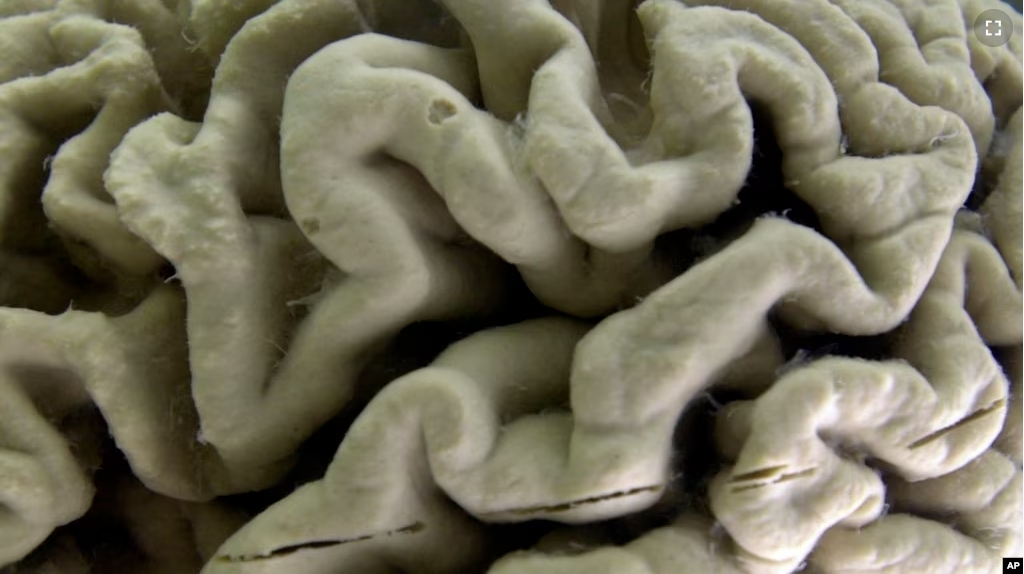A long-term study in China has shown that a series of changes take place in the brains of people who get Alzheimer’s disease long before they present signs of the sickness.
The large study followed middle-aged and older adults for 20 years. The individuals were examined on a regular basis during that period. The researchers used brain imaging, spinal fluid checks and other tools to collect data.
The researchers reported that the study subjects who later developed Alzheimer’s showed high levels of disease-linked protein in their spinal fluid. The higher levels were recorded as much as 18 years before the patients were identified as having Alzheimer’s.
Then every few years, the study detected another so-called biomarker of coming trouble.
Scientists still do not know exactly how Alzheimer’s forms. The disease slowly destroys the brain, interfering with the ability to think. Alzheimer’s patients develop proteins called beta-amyloid and tau, which over time build up into plaques that block brain processes.
The new research, published in the New England Journal of Medicine, offers a timeline for how these proteins develop.
The study’s importance “cannot be overstated,” said Dr. Richard Mayeux, an Alzheimer’s specialist at Columbia University who was not involved in the research.
“Knowledge of the timing of these physiological events is critical” for testing new ways of treating and maybe even preventing Alzheimer’s, he wrote in a piece published alongside the study report.
Scientists already knew that in rare, genetic forms of Alzheimer’s that affect young people, a poisonous form of amyloid starts developing about 20 years ahead of symptoms. At some point after that, tau develops as well.
The new findings show the order of such biomarker changes common to age-related Alzheimer’s.
Researchers with Beijing’s Innovation Center for Neurological Disorders compared 648 people who were later found with Alzheimer’s to an equal number who remained healthy. The amyloid finding in future Alzheimer’s patients was the main discovery.
Differences in tau were found next, followed by a marker of trouble in how neurons communicate. A few years after that, the study found differences in brain shrinkage and cognitive test scores between the two groups.
“The more we know about viable Alzheimer’s treatment targets and when to address them, the better and faster we will be able to develop new therapies and preventions,” said Claire Sexton, director of scientific programs with the Alzheimer’s Association. She noted that blood tests are coming soon that promise to also help by making it easier to find amyloid and tau.
More than 6 million Americans, and millions more worldwide, have Alzheimer’s. There is no cure.
But last year, Leqembi became the first approved drug that could slow the worsening of early Alzheimer’s for a few months. The drug works by clearing away some of the amyloid protein. Other drugs are being developed to target tau.
I’m Caty Weaver.
The Associated Press reported this story. Hai Do adapted it for VOA Learning English.
_____________________________________________
Words in this Story
detect – v. to discover or determine the existence, presence, or fact of something
plaque – n. (medical) a histopathologic lesion of brain tissue that is characteristic of Alzheimer’s disease and consists of a dense proteinaceous core composed primarily of beta-amyloid that is often surrounded and infiltrated by a cluster of degenerating axons and dendrites
physiological – adj. of or relating to the organic processes and phenomena of an organism or any of its parts or of a particular bodily process
cognitive – adj. of, relating to, being, or involving conscious intellectual activity (such as thinking, reasoning, or remembering)
viable – adj. capable of working, functioning, or developing adequately
therapy – n. treatment of an abnormal state of the mind or body
